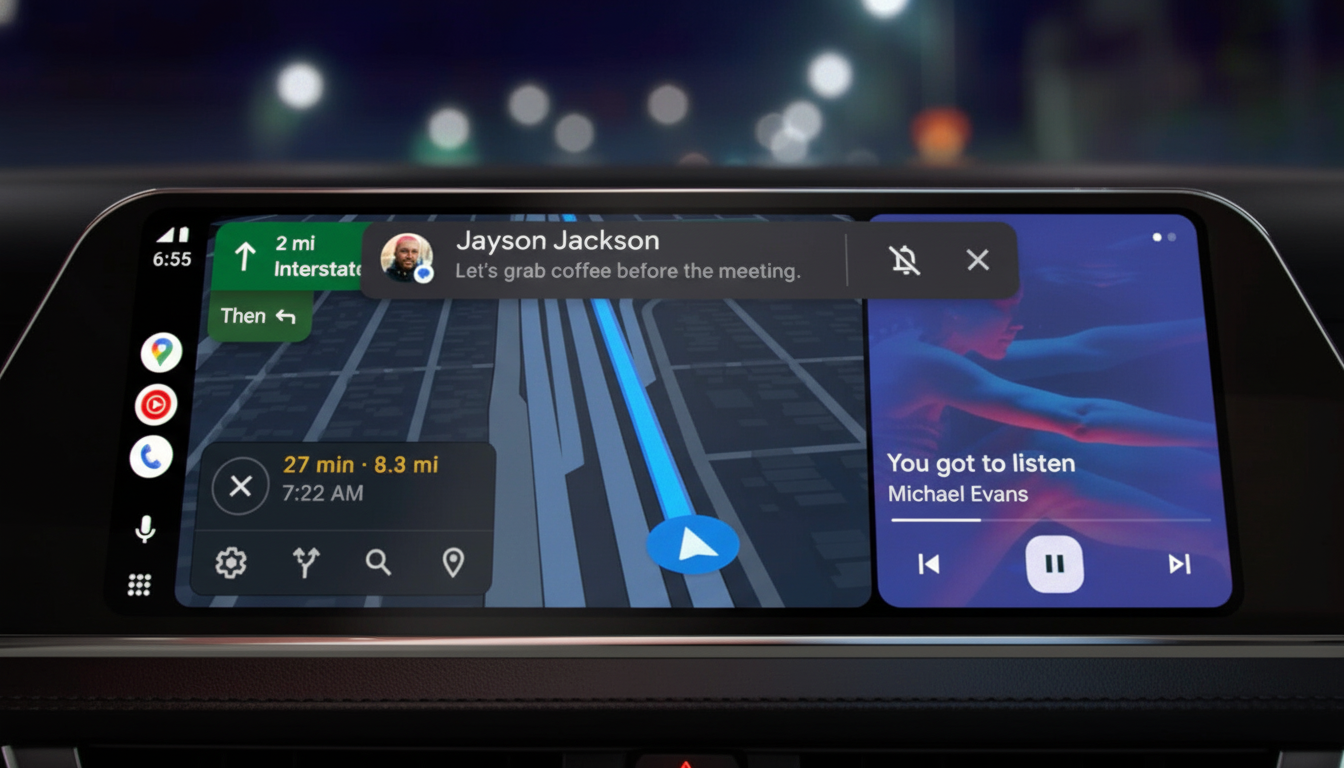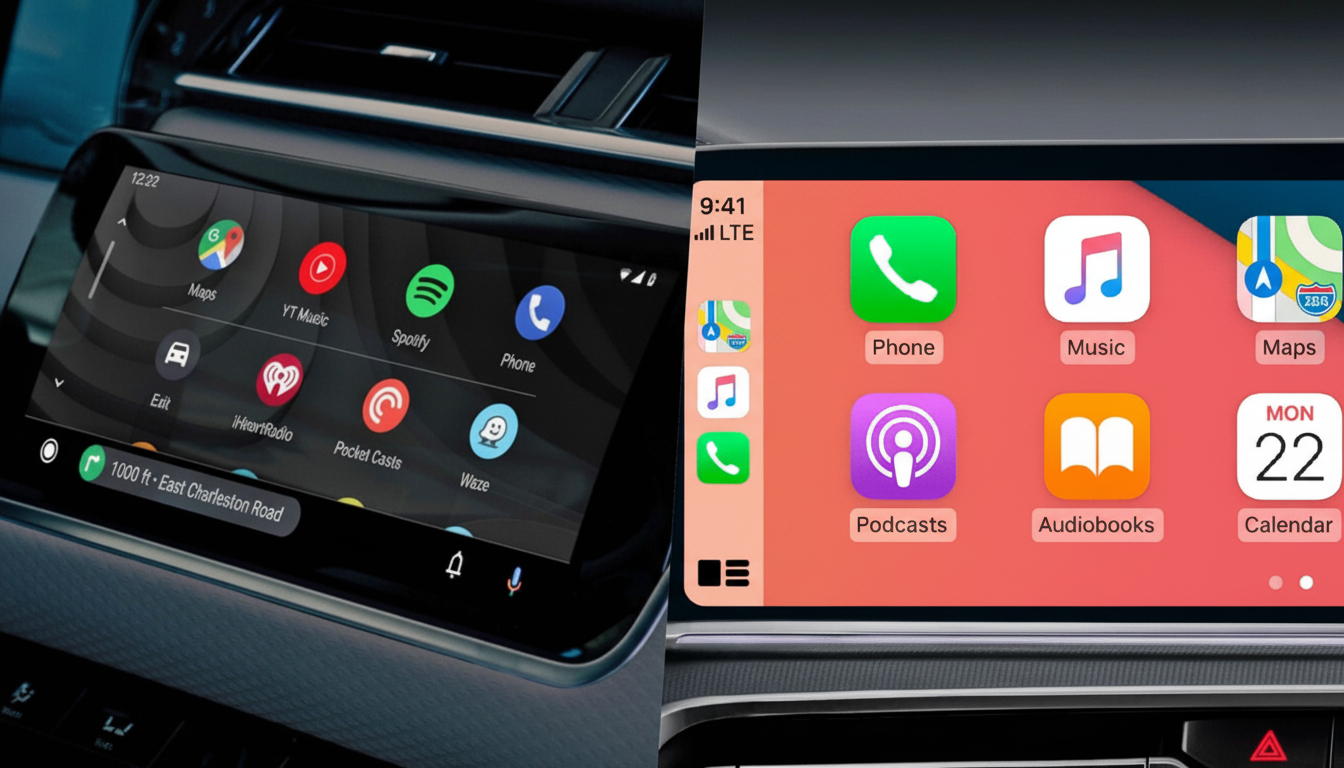With Android Auto, it seems you’ll be able to juggle these audio apps without all the fuss. References to the feature were found within code in Android Auto v15.6.154404 beta hints at a new multi-card media interface built into the dashboard, which allows drivers to swipe between their currently active or recent audio apps without having to leave and reopen them. If it ships, the change orbits one of the platform’s long-standing pain points for people who shift between streaming, podcasts, and audiobooks on the go.
What’s changing in Android Auto’s new media card switcher
Today, Android Auto presents one “now playing” media card for whatever was last in control. Moving from, say, Spotify to YouTube Music or Audible generally involves jumping into the app picker or the app, then starting playback so you get a new dashboard card. The new approach would bring a whole array of media cards to the top and allow you to swipe across them horizontally, bringing your favorite services with a single finger swipe.

In practice, that means you could start a morning commute with Spotify — then also switch to a news podcast in Pocket Casts at something like a stoplight during your drive in and return to another playlist later, all from within the dashboard’s swipeable carousel and with fewer taps and less maneuvering. It looks like the feature is constructed to be compatible with the current “split-screen Coolwalk” layout, maintaining at-a-glance controls while minimizing context switches.
Why it matters for drivers and in-car safety today
Listening habits have long extended beyond one music app. According to Edison Research’s most recent Infinite Dial report, 47% of Americans 12+ listen to podcasts on a monthly basis, and music streaming is now the norm across numerous services. So many drivers, in turn, maintain two or three audio apps in regular rotation — one for playlists, another to play long-form stories, and a third for audiobooks.
Reduced interaction is not just convenient, but a safety win. Research conducted by the Virginia Tech Transportation Institute reveals that eyes diverted from the road longer than 2 seconds increase crash risk. The AAA Foundation has also identified high mental demand in a lot of in-vehicle infotainment features. Those findings align with a swipeable media carousel that eliminates more of the taps and app launches required to switch audio sources.
How the swipeable multi-card media interface could work
According to strings present in the beta, Android Auto would save cards for multiple recent or active audio sessions, in all likelihood ordered by recency. A fast left-right swipe in the dashboard media pane would reveal controls for the next app — play/pause, skip, recommendations — without switching back to that app. That is analogous to how navigation and communication tiles already coexist in the Coolwalk discipline.
This would align with Google’s larger effort to simplify car-related tasks. The company’s shown off features like call screening and call notes, and has been testing home screen widgets to surface lightweight controls. The multi-card media experience follows the same philosophy: fewer deep dives into apps, more glanceable actions from the main screen.

Real-world impact for commuters and everyday passengers
Think someone who switches between playlists for passengers and an audiobook while en route. Or a family road trip where one person is streaming music as another cues up a podcast at the next pit stop. By placing Spotify and YouTube Music, along with Audible and a podcast app, in a swipeable row, what used to be something of a minor hassle now becomes damn near instantaneous — while you still retain sight of the map and key controls.
With Android Auto appearing in so many new cars and aftermarket head units these days, incremental UX boosts like this one can yield disproportionately huge results. Developers might also see further engagement, as a long-pressing user interacts with their app — this keeps it “present” on the dashboard longer, thereby prompting quicker returns without having to relaunch an app.
How it compares to CarPlay, and what could come next
Apple CarPlay has a dashboard with a huge Now Playing tile and quick app access, but regularly switching audio sources can still mean hopping between apps or interacting with the dock.
If such swipeable media cards come to fruition in Android Auto, they would give Google one of the smoothest multi-app audio workflows on a consumer-facing car platform.
And notably, this feature isn’t live yet. Code references in a beta build usually come many weeks or months before public rollout — and sometimes as experiments that ultimately never ship. Google also uses server-side flags to roll out features slowly. Yet the implementation details betray a thoughtful upgrade that jibes with Android Auto’s recent wave of faster, simpler in-car tasks.
When and if the multi-card media interface goes wide, it will be one of those small changes that drivers notice immediately — especially ones who use more than one app for listening purposes. More listening, less hassle, and less temptation to take your eyes off the road.

